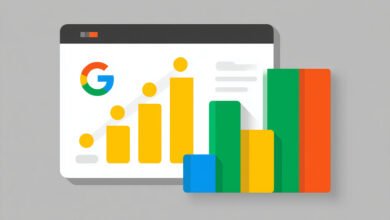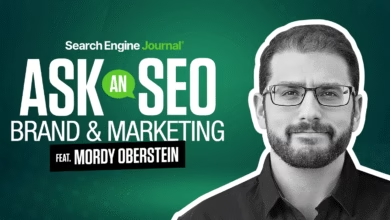Master AI-Powered Google Ads: Write Winning Copy

▼ Summary
– LLMs like Google’s Gemini can generate high-quality Google Ads copy quickly, but results depend heavily on the quality of prompts used.
– Effective prompts require four key elements: defining your persona, specifying the task, providing context about audience and product, and setting format constraints.
– Advanced prompting techniques include using personas for brand voice, iterative refinement, A/B testing variations, and example-based learning from competitor ads.
– Negative constraints that tell the AI what to avoid are crucial for steering away from generic language and common pitfalls in ad copy.
– AI-generated copy should always be reviewed and edited by humans for accuracy, brand tone, and clarity before deployment.
Crafting compelling Google Ads copy is no longer a slow, manual process thanks to modern AI tools. By mastering a few strategic prompting techniques, you can generate high-quality, conversion-focused ad variations in minutes rather than hours. The secret lies not in the AI itself, but in how clearly you direct it. Think of the AI as an incredibly capable assistant who still needs precise instructions to deliver exactly what your campaign requires.
Google provides some built-in AI suggestions, but for creating batches of tailored ads or scaling across headlines and descriptions, a more deliberate approach is essential. Earlier this year, Google released a playbook on prompt engineering. Let’s narrow that down to the core principles that matter for writing high-performing Google Ads.
Building the Foundation of a Powerful Prompt
Imagine AI as a brilliant detective. Even the finest investigator needs solid clues and a clear mission. AI operates the same way, it possesses vast knowledge but can’t guess your specific needs. The more detailed and unambiguous your instructions, the higher the quality of the output you’ll receive. According to best practices, four key elements form the backbone of an effective prompt for ad copy.
Establish a Persona Begin by assigning a role. For instance, instruct the AI with: “You are a direct-response copywriter specializing in high-converting Google Ads.” This sets the appropriate perspective and expertise level.
Define the Task with Precision Be crystal clear about your objective. Are you aiming for clicks, sign-ups, or brand awareness? A well-defined task ensures the tone, urgency, and call-to-action align perfectly with your campaign goals.
Provide Rich Context Give the AI a complete picture. Describe your target audience, their pain points, your product or service, and what makes it unique. Without this background, the AI will default to generic messages that fail to engage.
Specify the Format Google Ads enforces strict character limits, 30 for headlines and 90 for descriptions. Include these constraints in your prompt to avoid tedious edits and maintain the efficiency of batch generation.
Constructing a Complete Ad Copy Prompt
Bringing these elements together creates a practical template for generating ads. A robust prompt structure looks like this:
Persona: “Act as an expert Google Ads copywriter focused on driving conversions.” Task: “Our audience is [describe your ideal customer, including demographics and interests]. The copy tone should be [e.g., urgent, professional, or friendly]. Integrate these keywords: [list keywords]. The primary call to action is [e.g., ‘Start Free Trial’ or ‘Download Now’].” Context: “We offer [product/service name], which is a [brief description]. Our unique advantage is [key differentiator]. Key customer benefits include [list 3-5 main benefits].” Format: “Generate 3-5 unique Google Search ad variations. Each must contain three headlines (max 30 characters each), two descriptions (max 90 characters each), and a clear CTA.”
Advanced Prompting Strategies for Refined Results
Once you’re comfortable with the basics, these advanced methods can further enhance your ad copy.
1. Adopting a Specific Persona Instruct the AI to embody a particular character. For example: “Write like a witty, sarcastic marketer targeting millennials,” or “Adopt the tone of a trusted financial advisor.” This technique injects a distinct brand voice directly into the copy.
2. The Iterative Ladder Approach Build your prompts progressively instead of seeking perfection immediately. Start with a general request like, “Generate five headlines for our project management software.” Then refine: “Now, make the second headline more benefit-oriented for team leaders.” Follow up with: “Using that refined headline, create two 90-character descriptions leading to a ‘Start Free Trial’ CTA.” This step-by-step guidance hones the output to match your vision.
3. Preparing for A/B Tests Ask the AI to produce variations designed for split testing. A prompt could be: “Create two headline and description sets for our CRM software. Version A should emphasize the pain of disorganized contacts. Version B should highlight the benefit of automated follow-ups.” This generates ready-to-test ad pairs that can directly shape your strategy.
4. Learning from Examples Provide the AI with samples of ads you admire (or dislike) to establish a quality benchmark. Try: “Here are two competitor ads that perform well. Analyze their structure and tone, then produce three new variations for our product in a similar style.” This few-shot prompting is excellent for replicating a proven effective style.
The Impact of Negative Constraints
Directing the AI on what to avoid is equally vital. These negative constraints prevent common pitfalls. Instructions like, “Do not use industry jargon,” “Avoid superlatives like ‘best’ or ‘ultimate,’” or “Don’t sound salesy; be helpful and informative,” steer the AI away from clichés and generic language, yielding more original and engaging copy.
The Essential Human Review
AI generates excellent starting points, but it cannot replace human discernment and creativity. Always personally review and refine the output. Verify all factual claims and statistics. Listen for brand voice consistency. Check that the message is instantly clear and compelling. With these safeguards, you transition from laborious writing to efficient prompting, refining, and launching. This accelerated workflow allows you to test more concepts and identify winning ads faster. Fresh, varied copy resonates with customers, and smart prompting helps you consistently produce it without creative fatigue. The future of marketing leverages AI to amplify human creativity, not replace it. Sharper prompts lead to better ads and stronger performance.
(Source: Search Engine Land)





